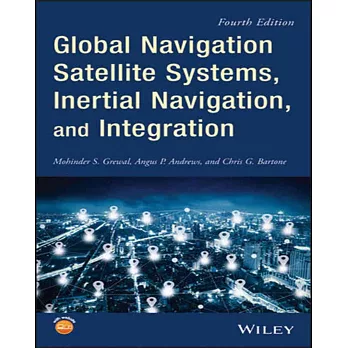This book provides readers with solutions to real-world problems associated with global navigation satellite systems, inertial navigation, and integration. It presents readers with numerous detailed examples and practice problems, including GNSS-aided INS, modeling of gyros and accelerometers, and SBAS and GBAS. This revised fourth edition adds new material on GPS III and RAIM. It also provides updated information on low cost sensors such as MEMS, as well as GLONASS, Galileo, BeiDou, QZSS, and IRNSS/NAViC, and QZSS. Revisions also include added material on the more numerically stable square-root information filter (SRIF) with MATLAB programs and examples from GNSS system state filters such as ensemble time filter with square-root covariance filter (SRCF) of Bierman and Thornton and SigmaRho filter.
本書特色
Global Navigation Satellite Systems, Inertial Navigation, and Integration, 4th Edition provides:
- Updates on the significant upgrades in existing GNSS systems, and on other systems currently under advanced development
- Expanded coverage of basic principles of antenna design, and practical antenna design solutions
- More information on basic principles of receiver design, and an update of the foundations for code and carrier acquisition and tracking within a GNSS receiver
- Examples demonstrating independence of Kalman filtering from probability density functions of error sources beyond their means and covariances
- New coverage of inertial navigation to cover recent technology developments and the mathematical models and methods used in its implementation
- Wider coverage of GNSS/INS integration, including derivation of a unified GNSS/INS integration model, its MATLAB implementations, and performance evaluation under simulated dynamic conditions
Global Navigation Satellite Systems, Inertial Navigation, and Integration, Fourth Edition is intended for people who need a working knowledge of Global Navigation Satellite Systems (GNSS), Inertial Navigation Systems (INS), and the Kalman filtering models and methods used in their integration.



 天天爆殺
天天爆殺  今日66折
今日66折 
























 博客來
博客來 博客來
博客來 博客來
博客來 博客來
博客來 博客來
博客來